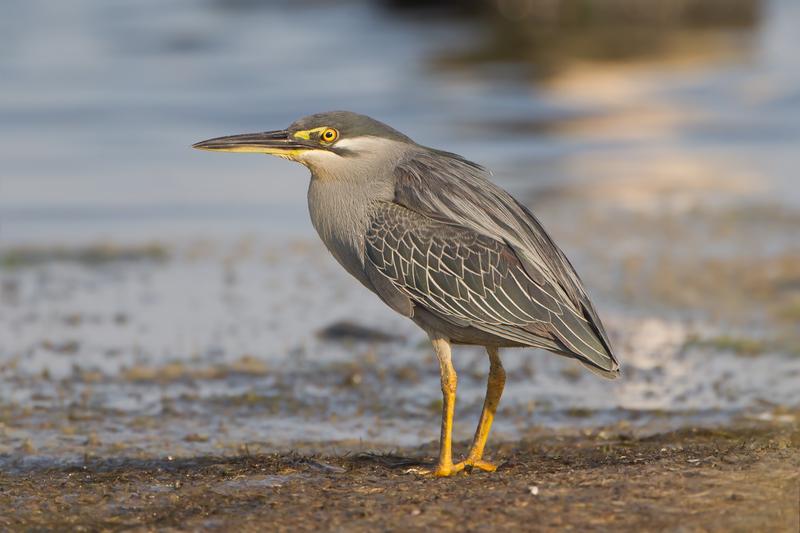Striated heron
[Butorides striata]
The striated heron (Butorides striata) also known as mangrove heron, little heron or green-backed heron, is a small heron, about 44 cm tall. Striated herons are mostly non-migratory and noted for some interesting behavioral traits. Their breeding habitat is small wetlands in the Old World tropics from west Africa to Japan and Australia, and in South America. Vagrants have been recorded on oceanic islands, such as Chuuk and Yap in the Federated States of Micronesia, the Marianas and Palau; the bird recorded on Yap on February 25, 1991, was from a continental Asian rather than from a Melanesian population, while the origin of the bird seen on Palau on May 3, 2005 was not clear. This bird was long considered to be conspecific with the closely related North American species, the green heron, which is now usually separated as B. virescens, as well as the lava heron of the Galápagos Islands (now B. sundevalli, but often included in B. striata, e.g. by BirdLife International); collectively they were called "green-backed herons".

 juvenile
juvenile
- Prominent bill
- Long legs
Size: Village Hen 46-76± cm.
Predominant Colours: ash grey, glistening greenish black, greenish black, white
Associated Colours: ash grey and white
Bill Length: 7 cm.
Bill Shape & Colour: greenish yellow and black, dark brown above, sage green below
Leg Colour: yellowish leaf green